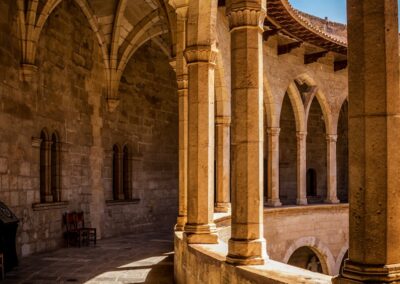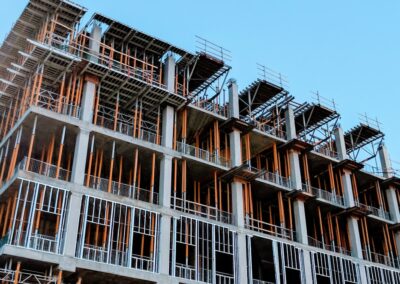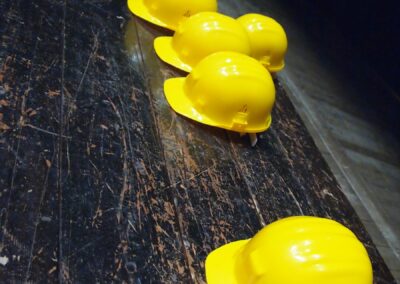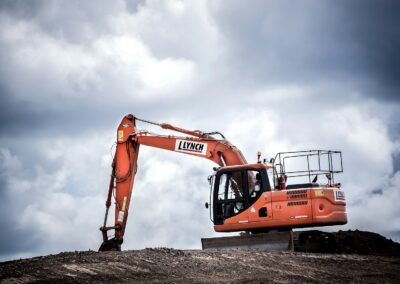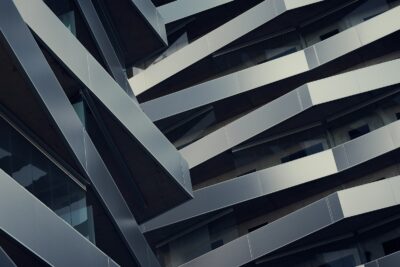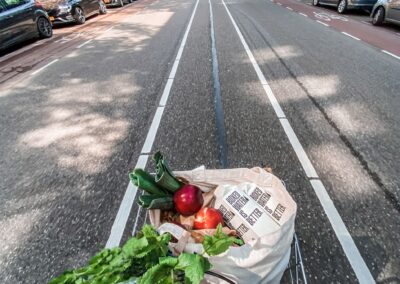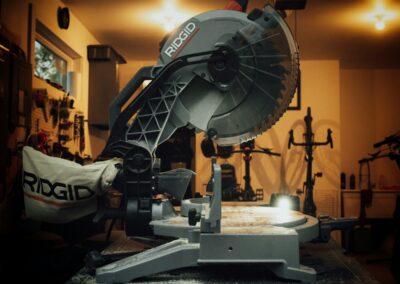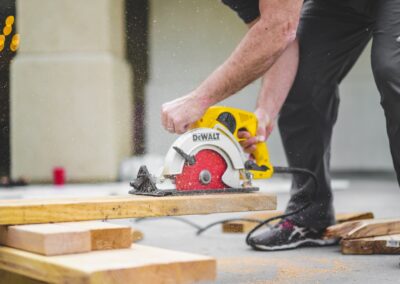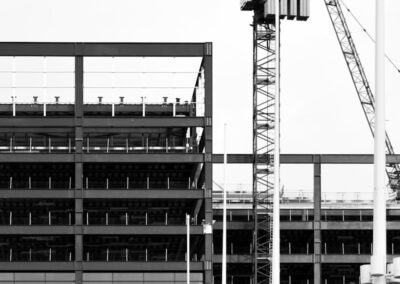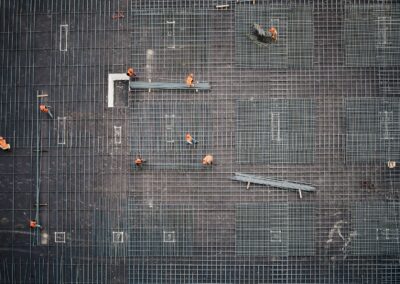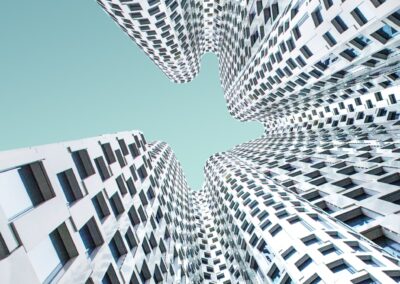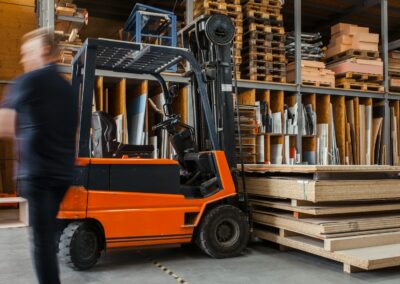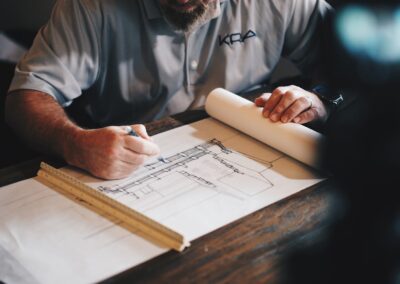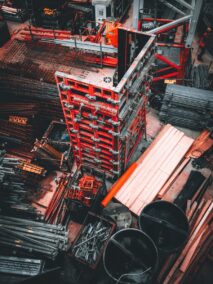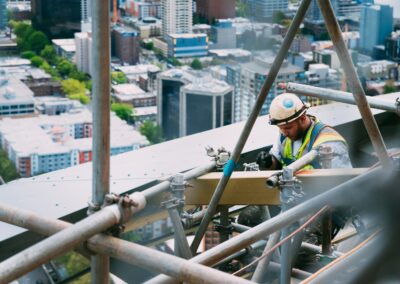Harnessing Technology for Energy Efficiency and Environmental Impact Reduction
The Role of BIM and Digital Twins in Sustainable Design
Building Information Modeling (BIM) and digital twins are revolutionizing the construction industry by providing powerful tools to support the implementation of sustainable design principles. Through detailed simulations of energy usage and environmental impact, these technologies enable architects and engineers to create buildings that are not only efficient but also environmentally friendly. By integrating BIM and digital twins, project managers and business executives can ensure that their construction projects align with global sustainability goals.
In regions like Saudi Arabia and the UAE, where rapid urban development is ongoing, the adoption of BIM and digital twins is crucial for sustainable growth. Cities such as Riyadh and Dubai are at the forefront of this technological shift, utilizing these tools to enhance the sustainability of their infrastructure. By leveraging BIM and digital twins, these cities can optimize resource utilization, reduce carbon footprints, and improve the overall quality of life for their residents.
The integration of BIM and digital twins facilitates a comprehensive understanding of a building’s performance over its lifecycle. This holistic approach allows for better decision-making during the design, construction, and operational phases, ensuring that sustainability is a core consideration at every stage.
Simulating Energy Usage for Sustainable Design
One of the key benefits of BIM and digital twins in sustainable design is their ability to simulate energy usage accurately. These simulations provide valuable insights into how a building will consume energy, enabling designers to identify areas where efficiency can be improved. By analyzing various design scenarios, architects can make informed decisions that reduce energy consumption and promote sustainability.
For instance, in Riyadh and Dubai, where the climate demands significant energy for cooling, BIM and digital twins can help design buildings that optimize natural ventilation and insulation. These simulations can model the impact of different materials, orientations, and architectural features, leading to designs that minimize reliance on artificial cooling systems. This not only reduces energy costs but also decreases greenhouse gas emissions, contributing to a more sustainable urban environment.
Furthermore, BIM and digital twins allow for the integration of renewable energy sources into building designs. By simulating the performance of solar panels, wind turbines, and other renewable technologies, designers can create buildings that harness natural energy sources effectively. This integration is crucial for cities aiming to reduce their dependence on fossil fuels and transition to a sustainable energy future.
Assessing Environmental Impact with Digital Twins
Beyond energy usage, BIM and digital twins play a vital role in assessing the environmental impact of construction projects. These technologies provide detailed analyses of a building’s carbon footprint, water usage, and waste generation, allowing stakeholders to implement strategies that mitigate negative environmental effects.
In the UAE and Saudi Arabia, where environmental conservation is increasingly prioritized, the ability to assess and minimize the environmental impact of construction projects is invaluable. Digital twins can model the effects of construction activities on local ecosystems, enabling project managers to develop mitigation plans that protect biodiversity and natural resources. This proactive approach aligns with the sustainability goals of these nations, ensuring that development occurs responsibly and sustainably.
Additionally, digital twins can support the circular economy by facilitating the reuse and recycling of construction materials. By tracking the lifecycle of materials and simulating their potential reuse in future projects, digital twins help reduce waste and promote sustainable resource management. This capability is particularly relevant in regions with ambitious construction agendas, where managing material resources efficiently is essential for long-term sustainability.
Driving Sustainable Construction Practices with BIM and Digital Twins
Enhancing Collaboration and Decision-Making
BIM and digital twins enhance collaboration among stakeholders in construction projects, fostering a unified approach to sustainable design. By providing a shared virtual environment, these technologies enable architects, engineers, contractors, and clients to work together seamlessly, ensuring that sustainability goals are consistently prioritized.
In cities like Riyadh and Dubai, where large-scale construction projects involve multiple teams and complex logistics, the collaborative capabilities of BIM and digital twins are particularly valuable. These tools facilitate real-time data sharing and communication, reducing the likelihood of errors and ensuring that all stakeholders are aligned with the project’s sustainability objectives. This collaborative approach not only improves project outcomes but also strengthens the commitment to sustainable development.
Moreover, the use of BIM and digital twins enhances decision-making by providing comprehensive data and simulations. Project managers can evaluate various design and construction scenarios, assessing their impact on energy usage, environmental footprint, and overall sustainability. This data-driven approach enables informed decision-making, leading to more efficient and sustainable construction practices.
Implementing Sustainable Design Principles
To fully leverage the potential of BIM and digital twins in sustainable design, it is essential to integrate these technologies into the core project workflow. This involves investing in the necessary software and training personnel to use these tools effectively. By building a robust technological foundation, organizations can ensure that sustainability is embedded in every aspect of their construction projects.
For business executives and project managers in the UAE and Saudi Arabia, adopting BIM and digital twins represents a strategic investment in the future. These technologies not only enhance the sustainability of individual projects but also contribute to the broader goals of national sustainability agendas. By championing the use of BIM and digital twins, organizations can position themselves as leaders in sustainable construction, gaining a competitive edge in the market.
Furthermore, the implementation of sustainable design principles through BIM and digital twins aligns with global trends towards green building certifications and standards. By achieving certifications such as LEED or BREEAM, projects can demonstrate their commitment to sustainability, attracting investors, clients, and tenants who prioritize environmental responsibility.
Conclusion: The Future of Sustainable Construction
BIM and digital twins are transformative technologies that are reshaping the construction industry by enabling sustainable design and construction practices. By providing detailed simulations of energy usage and environmental impact, these tools empower stakeholders to make informed decisions that enhance efficiency and sustainability.
In rapidly developing regions like Saudi Arabia and the UAE, the adoption of BIM and digital twins is crucial for achieving sustainable growth. Cities such as Riyadh and Dubai are leading the way in leveraging these technologies to create buildings that are not only efficient but also environmentally friendly.
By investing in BIM and digital twins, business executives and project managers can ensure that their construction projects align with global sustainability goals, driving progress towards a more sustainable future. The integration of these technologies enhances collaboration, optimizes resource utilization, and reduces the environmental footprint of construction activities. As the construction industry continues to evolve, BIM and digital twins will play a pivotal role in shaping a sustainable and resilient built environment.
—
#BIM #DigitalTwins #SustainableDesign #EnergyUsageSimulation #EnvironmentalImpact #ModernTechnology #BusinessSuccess #LeadershipSkills #ProjectManagement #SaudiArabia #UAE #Riyadh #Dubai


